In a world of fast fashion and trend-driven accessories, where street-style stars’ heavily jeweled outfits makes it hard to distinguish the adorned from adornment, it’s easy to lose sight of the jewelry. You know, the elegant, whimsical pieces, crafted with creativity in mind, standing in a league of their own.
Everyone already knows the timeless mystique of diamonds; they’re a girl’s best friend. But what of the other three, often passed over, precious gemstones? Consumers’ knowledge of heart-stopping emeralds, rubies and sapphires remains scant, they swirl in and out of our consciousness, but no one really bothers to get to know them.
Long before Dorothy was clicking her famous heels together, Chinese and Indian women living in 200 BC had their very own ruby slippers – the stitched-on gemstones’ powerful properties bringing wearers good fortune from the ground up. Rubies were even scattered beneath the foundation of temples to protect the structure, while a large quantity was used to ornament the armour of Indian and Chinese nobles. For good reason, too. Ruby is the second hardest natural-occurring substance known to man behind the diamond, registering nine on the ten-point Mohs scale of hardness.
“For centuries, mankind has been coveting rubies, not to be used for adornment, but to be used for the power on the owner, and the power they scribed,” Reema Keswani, a member of the American Society of Jewellery Historians, explained. “They were worn by kings’ knights, by royalty; and the basis of rulership during that time was predominantly male. The stones were utilized for their protective powers rather than aesthetic adornment.”
The Mogok Valley in Myanmar (then Burma) was for centuries the world’s main source of rubies, producing some of the finest ever mined – the most rarefied color described as ‘pigeon’s blood,’ red being the primary hue, with violet, pink and orange as secondary colors. And carat for carat, a flawless ruby can be valued at four times more than a diamond.
“A three-carat deep red ruby is a great rarity, whereas it’s not unusual to come across a diamond of that size,” Ms Keswani said. “Ten-carat diamonds frequently circle the marketplace, but rubies of the same weight scarcely ever occur.”
Matched in hardness to the ruby is its secret twin sister, the sapphire, which comes in a kaleidoscopic range of colors. Both gemstones are members of the corundum family, which can be confusing for consumers accustomed to the sapphire’s sole connection with deep blue, mostly thanks to the late Princess Diana’s jewelry collection, and obviously Kate Middleton’s left ring finger.
“Red sapphires are called rubies, while light-red rubies are mostly labeled as pink-sapphires,” Ms Keswani clarified. “Sapphires actually come in every colour of the rainbow. Its blue counterpart is just the most plentiful, which has brought that colour to prominence in the commercial marketplace.”
Since 800 BC, sapphires have been prized as powerful gemstones. Rulers of ancient Persia believed the sky was a reflection of the blue stone’s prominence in the region, while kings wore sapphires as a defence from harm.
It has long been believed that sapphires enabled people to connect to the universe, the stone’s energy opening ones internal and spiritual self to its greater powers.
During the 11th and 12th centuries, sorcerers honored the sapphire more than any other stone, believing it enabled them to hear and understand obscure oracles. Not only were sapphires said to help connect with astral and psychic realms, they also provided protection for those who took on otherworldly journeys.
The Sinhalese, meanwhile, believed the sapphire served as their protection against witchcraft and sorcery; banishing evil spirits and sending the negative spell of black magic back to the sender.
It’s brilliant blue color was also used by physicians in the Middle Ages as an antidote to poisons, and a cure for the plague, skin disorders and fever. Sapphires were thought to preserve the eyes of smallpox sufferers if rubbed on the eyelids, and during the 17th century, London’s Church of Old St. Paul’s was given a large sapphire by Richard de Preston to cure infirmities in the eyes of those afflicted.
For Buddhists, a sapphire represented friendship and loyalty, for others it was the stone of prosperity, and in Ancient History it was often seen as a sacred protector of love. Purportedly, Emperor Charlemagne (who, during his 780 AD reign, united most of Western Europe for the first time since the fall of the Roman Empire) possessed a sapphire talisman made by the Emperor of the East, Haroun el Raschid. Two sapphires were set in a portion of wood from the Holy Cross, meant to keep the Emperor’s affections constant to his wife, with myth suggesting its effect was so strong, their love continued well after her death.
Today, the most monetarily valued sapphire is the padparadscha, a Sri Lankan sapphire of delicate pink and orange. Also found in Vietnam and parts of Africa, the padparadscha was named after the lotus flower, its color similar to a vibrant sunrise.
“These stones are so rare they command a price far more than the gem’s primarily blue counterparts,” Ms Keswani explained.
Similarly, an emerald’s historic value lies in its nature-rich representations. For desert-based Islamic cultures, the gemstone’s majestic deep green embodied water and spring, symbolizing both love and life.
Cleopatra was the emerald’s biggest fan, and her widely known use and love for the stone led to the naming of Egypt’s most famous emerald deposit, Cleopatra’s Mine – an association that still remains. While the African desert supplied royalty with emeralds throughout the Middle Ages, it was Spain’s exploits and subsequent colonization of South America in the 16th century that brought the emerald to the main stage.
In the region now known as Columbia, ancient Muzo Indians had established successful and well-hidden emerald mines as early as 500 AD. It took invading Spanish explorers 30 years to conquer the Indian tribe, and another 20 to find the mines, where global trade routes were quickly established, first bringing the gemstones back via Spain and onto Europe and India. The New World treasures where highly sought after by monarchs and royalty, marking the beginning of Columbia’s famous emerald mining operations that have continued nearly uninterrupted.
Today Brazil produces more emeralds annually than any other country, however Colombia, and Muzo, its original mine, continues to dominate the trade by setting standards in size and color. Colombian emeralds, lightly touched with blue, are rarer and sometimes more expensive than a similar-sized diamond.
Known for its fragility, the emerald is far from a gem of perfection. But its earthy, rough qualities, courtesy of Mother Nature herself, give the stones coveted character and personality – their raw imperfections, inclusions and small fractures adding to their translucence and brilliance; a gem holding the all the secrets of an antique world that came before it.
Steeped in history, rubies, sapphires and emeralds will forever be au courant; their stories and powers from bygone eras giving way to a certain classicism that cements their status as the world’s most timeless trio.
Photo Credits: Gomberg’s “New World Order” map (1942), Elizabeth Taylor in Cleopatra (1963), Princess Diana at a royal function
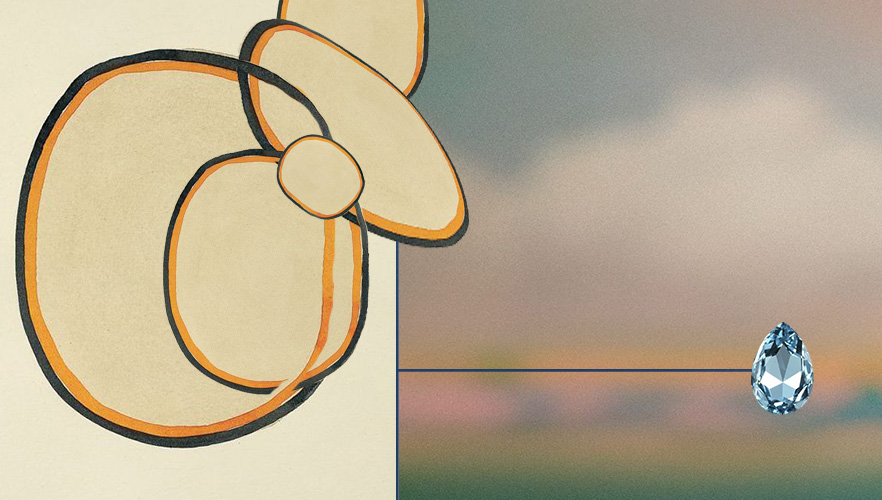


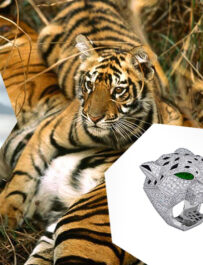



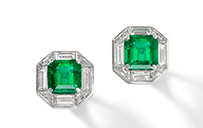


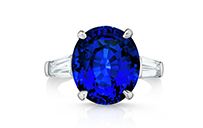
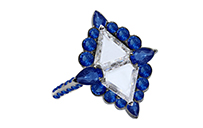
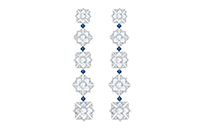
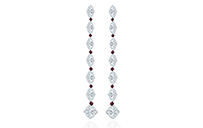
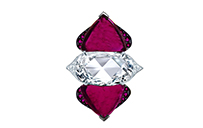

Comment
I just came across your blog and reading your beautiful words. I thought I would leave my first comment but I don’t know what to say except that I have enjoyed reading.